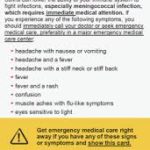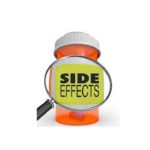Although people’s experiences differ both treatment and long term effects of aHUS can be detected by patients. Patients have asked :
Can the side effects of treatment using a complement inhibitor be distinguished from those temporary and permanent ongoing ailments which follow initial aHUS onset?
Our expert told us…
“Distinguishing between the side effects of treatment using a complement inhibitor and ongoing ailments or complications that follow the initial onset of atypical hemolytic uremic syndrome (aHUS) can be challenging. Both can have overlapping symptoms, and a thorough medical evaluation is essential to differentiate between them. Here are some considerations:
Side Effects of Complement Inhibitors:
- Common side effects of complement inhibitors like eculizumab (Soliris) may include headache, fatigue, and respiratory infections.
- Serious side effects can include an increased risk of certain infections, which should be monitored and managed.
- These side effects are often manageable with proper medical care.
Ongoing Ailments or Complications:
- Ongoing ailments or complications stemming from the initial aHUS onset may include kidney damage, hypertension, or residual effects on other organ systems.
- These long-term complications are part of the aHUS disease course and may require separate management.
Key to Distinguishing:
- Regular medical follow-up and communication with healthcare professionals are essential. They can help determine whether symptoms are related to treatment side effects or ongoing aHUS-related issues.
- In some cases, diagnostic tests or imaging may be necessary to evaluate the status of organs and the overall health of the patient.
Differentiating between side effects and aHUS-related complications requires a detailed clinical assessment, and healthcare professionals are best equipped to make these distinctions. Open communication and shared decision-making with the healthcare team are critical for the ongoing care and management of aHUS patients.”
The physical effects of a serious life threatening illness are real and some can be attributed to any damage done to the patient’s organs during the acute stage of the disease. In aHUS that damage is mainly to kidneys. Depending on the residual damage chronic ailments will be same as for others with kidney disease. Also dialysis treatment itself over time has a chronic impact on the body . Any mitigation of these chronic conditions would follow the same kidney care pathway routes. aHUS patients should bring these to the attention of their clinicians and get advice on what to do to mitigate them and continue to address them.
The adverse physical effects of complement inhibitor treatment is another matter. The treatment switches off one part of the immune system. That part has work to do in fighting infection among other things. So being aHUS immunocompromised has its consequences as would be the case for others who are similarly compromised. Mitigating action for general infections would be similar to others in the immunocompromised community.
A more specific infection for those on complement inhibitors is from meningococcal bacteria or viruses. This is the most serious side effect. It can be mitigated by vaccination and antibiotics and patient vigilance. Breakthrough infection remains a possibility and swift action and intervention is needed.
There are also the possibility of patients feeling the effects of the treatment process. Regular intravenous drips, for an hour or so, can have an impact, Pains may result in different parts of body. When the so called healthy people feel pains such as headaches they would take pain killers and pain subsides. The difference is this is often a one off incident and a pretty normal experience. When it is regular and at specific times of a treatment procedure that is a side effect which may be caused by reaction to the treatment ingredients or the way those ingredient is administered.
So there are clues on whether a condition is due to latent ailment or treatment and the patient is one who can tell the difference and can take action needed to mitigate physical adverse events.
There are long term studies on what happens to aHUS patients after being ill, using measuring instruments like patient reported outcomes, health state and “Fatigue” questionaires. There are also adverse event reporting processes run by the institutions which have approved complement inhibitor treatments. Reports from these studies are scarce and would rarely attribute the events between latent illness events and treatment side effects. Nor would there be tests of interventions to guage what might best to do to mitigate these events.
Other ways to get to the answer involves asking the patients themselves through qualitative research using interview techniques. Such studies can gain some understanding of the scale and impact of living with these effects and in doing so gain understanding of attribution. These studies would require many patients to participate and would involve a lot of resource to conduct a meaningful result.
Outside of aHUS care, the general population self administer remedies for common ailments no one is in perfect health all the time. Maybe there should a third category of “regular just life” incidents.

On a small scale Gobal Action attempted to attribute adverse events and side effects in the Rare Disease Day 2023 Video and has probably come nearest to answering the question ( see the above key conclusions). The question can be answered more fully in time. But nothing is better than patients asking their own Doctors and working with them to resolve and mitigate any any patients.
Article No. 634
RDD23 VIDEO – RESULTS REPORT
WWW.AHUSALLIANCEGLOBALACTION.ORG 18 March 2023 aHUS PATIENTS’ VIEWS ON THE ATTRIBUTION OF ADVERSE EVENTS /SIDE EFFECTS EXPERIENCED DUE TO EITHER THEIR PRIMARY DISEASE OR ITS TREATMENT Amber, Amelie, Amy, Anne-Kathrin, Arthur,…
aHUS adverse events reporting
So adverse events are being reported. In USA over 4500 per year on average for eculizumab are reported to the FDA and just over 400 per year for ravulizumab. But…
CONTINUE READINGaHUS adverse events reporting

aHUS adverse events and patient reported outcomes
aHUS patients in clinical trials are monitored for adverse events and personal outcomes experience while on treatment. Adverse events have been defined as “An unexpected medical problem that happens during…

Some side effect- Meningococcal infection!
The side effects of treatment and residual ailments of an aHUS onset featured highly by aHUS families in the contribution to the aHUS Patients Research Agenda. The topic is covered…
CONTINUE READINGSome side effect- Meningococcal infection!

Long term side effects of treatment
Other questions featured in the Rare Disease Day video about the aHUS treatment eculizumab, relate to side effects from infusions of the drug. Ellie of Lancashire England asks “Does anybody…
Spotlight on Ravulizumab 4- side effects
Article No. 320 19 February 2020 Continuing in the series of news blogs about Ravulizumab, which so far has covered dosing, special patient groups and developments, here the spotlight…

Side effects of ravulizimab between infusions
Ravulizumab is more widely used these days, particularly in the PNH community. Apart from the longer infusion intervals PNH patients benefit from higher dose levels that stop breakthrough haemolysis which,…

